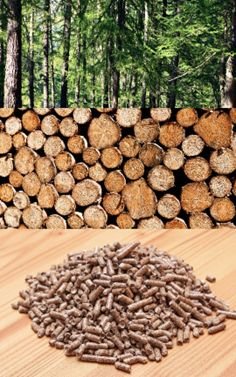U.S. EPA Wood Pellet Research Project
What are wood pellet production facilities?

Wood pellet production facilities process cut trees or wood manufacturing by-products by chipping, drying, grinding, and forming wood pellets. Some pellet facilities produce wood pellets for residential, domestic use such as heating or as fuel for grills. These facilities tend to be older, smaller, and often make pellets from waste wood from the wood products industry. Other pellet facilities produce pellets for industrial use, which are then shipped and burned to generate electricity in markets across the world. These wood pellet facilities are generally newer, larger, and often make pellets from logged trees and other forestry feedstock sources.
Why are we doing this project?
The industrial wood pellet industry has grown substantially over the last decade and is likely to continue to expand. The southeastern U.S. is a major producer of industrial wood pellets for export, and some communities have raised concerns about large wood pellet production facilities’ impacts on community members’ health and wellbeing. There is a need to better understand the health and environmental impacts of wood pellet facilities and to listen to the experiences of community members living near wood pellet facilities. This project is primarily focused on larger facilities that produce wood pellets for export for electricity generation.
What are the goals of this project?
The goals are to protect human health and the environment by:
- Assessing possible air, water, and community health impacts of industrial wood pellet production facilities in the southeastern U.S.
- Identifying and/or filling information gaps that could be useful for future decision making about the creation or expansion of wood pellet production facilities.
What are the planned project activities?
- Mapping and community characterization assessment: Map sites of wood pellet facilities and characterize communities close to facilities.
- Exposures: Measure or model exposures to potential contaminants in air.
- Health effects: Use historical health records to compare changes in communities’ health before and after existing facilities began operation.
- Perceived impacts: Interview community members about how wood pellet facilities affect their lives.
- Forest loss and water quality: Measure effects of forest loss from wood pellet sourcing on local water quality and quantity.
Who will work on this project?
Researchers in the U.S. EPA’s Office of Research and Development (ORD) are working in collaboration with partners in EPA’s Region 4 on this research effort. The team includes epidemiologists, geographic information specialists, air and water quality scientists, and public health researchers.
If you have additional questions, contact us.
